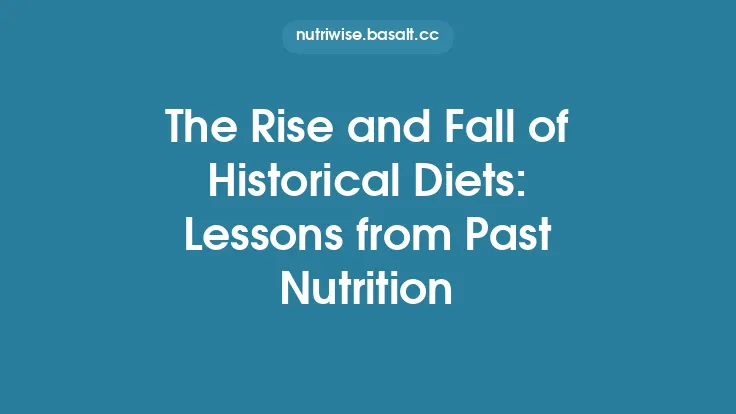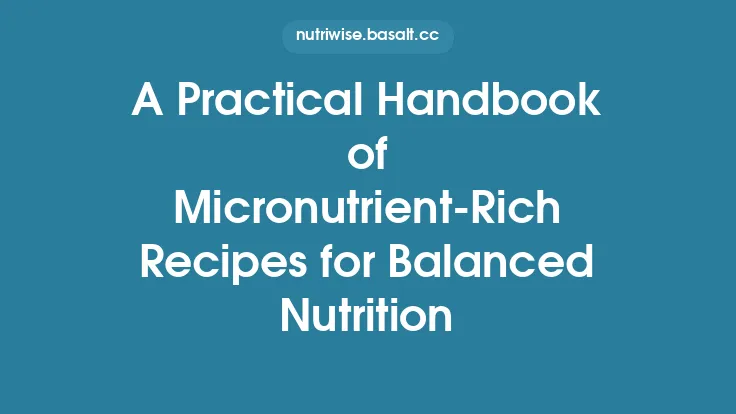Paleo cooking is built on the premise that we thrive best on foods our ancestors ate—lean meats, fish, eggs, fresh vegetables, fruits, nuts, and seeds—while steering clear of processed grains, refined sugars, and industrial seed oils. For many, this framework already eliminates a host of common allergens, but the reality is that individual sensitivities can be far more nuanced. Some people react to specific nuts, others to nightshades, and still others to dairy proteins that can linger in “paleo‑approved” dishes through hidden ingredients or cross‑contamination.
The goal of this guide is to give you a living, evergreen toolbox of paleo‑friendly recipes that are also engineered to be safe for a wide spectrum of allergy‑sensitive diets. By understanding the underlying principles, mastering a core pantry, and learning how to adapt each recipe on the fly, you’ll be able to create meals that are both nutritionally robust and free from the triggers that cause you trouble.
Understanding Paleo and Common Food Allergies
The Overlap
- Gluten & Grains – Paleo eliminates wheat, barley, rye, and most other gluten‑containing grains, which automatically removes a major trigger for celiac disease and non‑celiac gluten sensitivity.
- Dairy – Traditional paleo excludes dairy, but many modern “paleo‑style” recipes re‑introduce ghee, kefir, or cheese. For allergy‑sensitive eaters, stick to the strict version or use dairy‑free fats like coconut oil or clarified butter from grass‑fed cows.
- Eggs – Eggs are a staple protein source in paleo, yet egg allergy remains one of the most common childhood food allergies. Substitutions such as chia‑egg or flax‑egg can preserve texture while removing the allergen.
- Nuts & Seeds – While nuts and seeds are paleo powerhouses, they are also frequent allergens. Knowing which nuts are safe for you (e.g., macadamia vs. almond) and having seed alternatives (e.g., pumpkin vs. sesame) is essential.
- Soy & Legumes – True paleo excludes soy, but some “paleo‑inspired” dishes incorporate soy sauce or tempeh. Keep an eye out for hidden soy derivatives like hydrolyzed vegetable protein.
- Nightshades – Tomatoes, peppers, eggplant, and potatoes belong to the nightshade family. Some individuals with autoimmune conditions experience flare‑ups from these foods, so having nightshade‑free versions of classic recipes is valuable.
Why an Evergreen List Matters
Allergy profiles can evolve over time, and food manufacturers frequently change ingredient formulations. An evergreen recipe collection emphasizes principles (e.g., how to replace a dairy fat with a plant‑based one) rather than static ingredient lists, ensuring you can adapt recipes safely year after year.
Core Ingredients for Allergy‑Sensitive Paleo Cooking
| Category | Primary Options | Allergy‑Friendly Substitutes |
|---|---|---|
| Proteins | Grass‑fed beef, pasture‑raised poultry, wild‑caught fish, organ meats | For egg‑allergy: chia/flax “egg” binders; for fish‑allergy: shredded jackfruit or mushroom “meat” |
| Fats | Ghee, tallow, lard, coconut oil, avocado oil | For dairy‑allergy: replace ghee with clarified coconut oil; for nut‑allergy: avoid nut oils, use avocado oil |
| Vegetables | Leafy greens, cruciferous veg, root veg (except potatoes), zucchini, cucumber | Nightshade‑free: swap tomatoes with roasted beet puree; use cauliflower rice instead of rice |
| Fruits | Berries, citrus, stone fruits, apples, pears | Low‑histamine (if needed): choose peeled apples, blueberries |
| Nuts & Seeds | Almonds, walnuts, pumpkin seeds, sunflower seeds | Nut‑free: use toasted pumpkin seeds for crunch; seed‑free: use shredded coconut or crispy pork rind |
| Sweeteners | Raw honey, maple syrup, date paste | For honey‑allergy: use coconut sugar or monk fruit blend |
| Thickening Agents | Arrowroot, tapioca starch, gelatin | For gelatin (if avoiding animal collagen): use agar‑agar (check for seaweed allergy) |
Tip: Keep a “clean” set of utensils, cutting boards, and storage containers for each allergen group to prevent cross‑contamination.
Meal Planning Strategies
- Batch‑Cook Core Proteins – Roast a whole chicken, grill a slab of salmon, or slow‑cook a beef brisket. Portion into freezer‑safe bags labeled with the date and any allergen notes.
- Build a “Vegetable Library” – Roast a tray of mixed non‑nightshade veggies (e.g., carrots, parsnips, Brussels sprouts) and keep them ready for quick stir‑fries or salads.
- Create a “Sauce Station” – Whisk together a base of coconut aminos (soy‑free) with garlic, ginger, and a splash of lime. Store in small jars; add a dash of arrowroot slurry when heating to thicken.
- Allergen‑Specific “Swap Cards” – Write down common substitutions (e.g., “Egg → 1 tbsp chia + 3 tbsp water”) on index cards and keep them in the pantry for quick reference.
- Rotate Recipes Weekly – Use a spreadsheet to track which recipes you’ve made, noting any reactions. This helps you identify hidden triggers and keep the menu fresh.
Breakfast Ideas
1. Savory Sweet‑Potato & Sausage Hash (Nightshade‑Free)
Ingredients
- 1 large sweet potato, diced
- 200 g pork sausage (check for no added soy or dairy)
- 1 small onion, finely chopped
- 1 cup kale, stems removed and torn
- 2 tbsp avocado oil
- Salt, pepper, smoked paprika (optional)
Method
- Heat oil in a cast‑iron skillet over medium heat. Add sausage, breaking it up; cook until browned.
- Add onion and sweet‑potato cubes; season and sauté for 8‑10 min, stirring occasionally, until tender.
- Toss in kale; cook until wilted, about 2 min. Serve hot.
*Allergen notes:* No nuts, dairy, or eggs. Swap pork sausage for turkey or a plant‑based “paleo” sausage if you avoid pork.
2. Coconut‑Flax “Pancakes” (Egg‑Free)
Ingredients
- ½ cup coconut flour
- 2 tbsp ground flaxseed, mixed with 6 tbsp water (flax‑egg)
- 1 cup unsweetened almond‑free coconut milk
- 1 tbsp melted coconut oil + extra for cooking
- 1 tsp baking soda
- Pinch of sea salt
Method
- Whisk flax‑egg, coconut milk, and melted coconut oil together.
- In a separate bowl, combine coconut flour, baking soda, and salt.
- Fold wet ingredients into dry until a batter forms; let rest 5 min.
- Cook 2‑3 min per side on a pre‑heated non‑stick pan.
*Allergen notes:* Use coconut milk and oil to keep it nut‑free. Serve with fresh berries and a drizzle of maple syrup.
3. Breakfast “Bowl” with Ground Turkey & Avocado
Ingredients
- 200 g ground turkey, seasoned with garlic powder and thyme
- ½ avocado, sliced
- 1 cup sautéed spinach
- 2 tbsp pumpkin seeds (optional for crunch)
- 1 tbsp olive oil for cooking
Method
- Cook turkey in oil until fully browned.
- Assemble bowl: turkey, spinach, avocado, and pumpkin seeds. Drizzle with extra‑virgin olive oil and a squeeze of lemon.
*Allergen notes:* Free of nuts, dairy, and soy. Pumpkin seeds can be omitted for seed‑allergy.
Lunch & Main‑Course Recipes
1. Herb‑Crusted Wild‑Caught Salmon (Fish‑Allergy Alternative)
Ingredients
- 2 salmon fillets (150 g each) – or use firm tofu for a fish‑free version
- 2 tbsp fresh dill, chopped
- 2 tbsp fresh parsley, chopped
- Zest of 1 lemon
- 1 tbsp olive oil
- Salt & pepper
Method
- Preheat oven to 200 °C (400 °F).
- Mix herbs, lemon zest, salt, and pepper; press onto salmon.
- Drizzle olive oil over the top and bake 12‑15 min, until opaque.
*Allergen notes:* For fish‑allergy, substitute with marinated tofu or tempeh (if soy is tolerated) or a thick slice of roasted cauliflower.
2. Slow‑Cooked Beef & Root‑Veg Stew (Nut‑Free)
Ingredients
- 1 kg beef chuck, cut into 2‑cm cubes
- 3 carrots, sliced
- 2 parsnips, diced
- 1 turnip, cubed
- 1 onion, quartered
- 2 tbsp tomato‑free broth (bone broth)
- 2 tbsp apple cider vinegar
- 2 tbsp olive oil
- 2 bay leaves, 1 tsp dried thyme
Method
- Sear beef in oil until browned on all sides. Transfer to slow cooker.
- Add vegetables, broth, vinegar, herbs, and bay leaves.
- Cook on low 8‑10 hrs or high 4‑5 hrs. Remove bay leaves before serving.
*Allergen notes:* No nuts, dairy, or soy. Use a nut‑free broth (check labels for hidden allergens).
3. Coconut‑Lime Chicken Thighs with Cauliflower “Rice” (Nightshade‑Free)
Ingredients
- 4 bone‑in chicken thighs, skin on
- 1 cup coconut milk
- Zest & juice of 1 lime
- 2 tbsp fresh ginger, minced
- 1 tbsp coconut aminos (soy‑free)
- 1 head cauliflower, riced (food processor)
- 2 tbsp coconut oil
Method
- Marinate chicken in coconut milk, lime zest, ginger, and coconut aminos for 30 min.
- Bake at 190 °C (375 °F) for 35‑40 min, until skin crisp.
- Meanwhile, sauté cauliflower rice in coconut oil for 5‑7 min, seasoning with salt.
- Serve thighs over cauliflower rice, drizzling pan juices.
*Allergen notes:* Free of nuts, dairy, soy, and nightshades.
Side Dishes & Vegetables
1. Garlic‑Roasted Brussels Sprouts with Bacon Crumble
- Toss halved Brussels sprouts with olive oil, minced garlic, and sea salt. Roast 20 min at 200 °C (400 °F).
- In the last 5 min, add crumbled cooked bacon (check for nitrates if sensitive).
2. Zucchini Noodles with Pesto‑Style Avocado Sauce (Nut‑Free)
- Spiralize 2 large zucchinis.
- Blend 1 ripe avocado, ¼ cup fresh basil, 2 tbsp olive oil, 1 tbsp lemon juice, and a pinch of salt.
- Toss noodles with sauce; serve chilled or at room temperature.
3. Spiced Carrot & Parsnip Mash
- Boil equal parts carrots and parsnips until tender. Drain and mash with 2 tbsp ghee (or coconut oil for dairy‑free), a pinch of cumin, and a dash of cinnamon.
Desserts & Sweet Treats
1. Date‑Walnut Energy Balls (Nut‑Free Version)
- Blend 1 cup Medjool dates, ½ cup pumpkin seeds, 1 tbsp coconut oil, and a pinch of sea salt.
- Roll into 1‑inch balls; refrigerate 30 min.
*Allergen notes:* Use pumpkin seeds instead of walnuts for a nut‑free version.
2. Coconut‑Milk “Ice Cream” with Berries
- Freeze 2 cups full‑fat coconut milk in ice‑cube trays.
- Blend frozen cubes with ½ cup frozen mixed berries and 1 tbsp honey until smooth.
3. Lemon‑Ginger Gelatin Dessert (Gelatin‑Free Alternative)
- Dissolve 2 tbsp agar‑agar in 2 cups water; bring to boil.
- Add juice of 1 lemon, 1 tbsp grated ginger, and 2 tbsp maple syrup.
- Pour into molds; chill until set.
*Allergen notes:* Agar‑agar is seaweed‑derived; ensure no seaweed allergy before using.
Snack & On‑the‑Go Options
- Crispy Kale Chips – Toss kale leaves with olive oil and sea salt; bake at 150 °C (300 °F) for 15‑20 min.
- Jerky‑Style Pork Rinds – Season thin pork slices with smoked paprika (optional) and dehydrate or bake until crisp.
- Veggie Sticks with Avocado‑Tahini Dip – If sesame is tolerated, blend avocado, tahini, lemon juice, and garlic; otherwise, use a simple olive‑oil‑and‑herb dip.
These snacks are designed to be portable, free from the most common allergens, and compliant with paleo macronutrient ratios (high protein/fat, low carb).
Adapting Recipes for Specific Allergens
| Allergen | Common Trigger in Paleo Recipes | Substitution Strategy |
|---|---|---|
| Egg | Binding in meatballs, pancakes | Flax‑egg (1 tbsp flax + 3 tbsp water) or chia‑egg (1 tbsp chia + 3 tbsp water) |
| Nuts | Almond flour, walnut “crusts” | Use coconut flour, cassava flour, or seed meals (pumpkin, sunflower) |
| Dairy | Ghee, cheese, yogurt | Coconut oil, avocado oil, dairy‑free “cheese” made from fermented cashew (if nuts tolerated) or nutritional yeast |
| Soy | Coconut aminos (occasionally soy‑derived) | Use pure coconut aminos or a homemade blend of balsamic vinegar + a pinch of salt |
| Nightshades | Tomatoes, peppers, potatoes | Use roasted beet puree, cauliflower “rice”, or sweet potato mash as base |
| Fish/Seafood | Salmon, shrimp, fish sauce | Substitute with marinated tofu, jackfruit, or mushroom “scallops” (large king oyster mushrooms) |
| Sesame | Tahini, sesame oil | Sunflower seed butter or a simple olive‑oil‑herb dip |
Testing Protocol: When trying a new substitution, prepare a small batch first. Keep a food diary noting any symptoms within 24‑48 hours. This systematic approach helps you pinpoint hidden cross‑reactivities.
Storage, Prep, and Food Safety Tips
- Label Everything – Include the date, protein type, and any allergen notes on each container.
- Separate Freezer Zones – Dedicate one shelf for nut‑free meals, another for dairy‑free, etc., to avoid accidental mixing.
- Batch‑Prep “Allergen‑Free” Bases – Cook large quantities of cauliflower rice, spiralized zucchini, and roasted root veg; store in airtight bags for quick assembly.
- Use Vacuum‑Sealed Bags – Extends shelf life of cooked meats and reduces oxidation, which can affect flavor and trigger sensitivities.
- Reheat Safely – Bring leftovers to an internal temperature of 74 °C (165 °F) to eliminate any potential bacterial growth, especially important for poultry and pork.
Resources and Tools for Ongoing Success
- Ingredient Tracker Apps – Apps like “FoodAllergy Tracker” let you log meals, symptoms, and ingredient sources.
- Paleo‑Friendly Cookbooks – Look for titles that explicitly state “no added sugars, no grains, no dairy” and provide full ingredient disclosures.
- Allergen‑Testing Kits – Home kits for common allergens (e.g., nut, dairy, soy) can give you peace of mind when trying new brands.
- Online Communities – Forums such as “Paleo Allergy Support” on Reddit or Facebook groups dedicated to specific allergies often share vetted recipes and brand recommendations.
- Professional Guidance – A registered dietitian with expertise in both paleo nutrition and food allergies can help you fine‑tune macro ratios while ensuring nutritional adequacy.
By grounding your kitchen in these core principles—clear ingredient knowledge, strategic meal planning, and flexible substitution techniques—you’ll be equipped to enjoy a vibrant, paleo‑centric menu that respects every nuance of your allergy‑sensitive diet. The recipes above are just the starting point; with the tools and mindset outlined here, you can continually expand your repertoire, experiment confidently, and keep your meals both delicious and safe for years to come.





